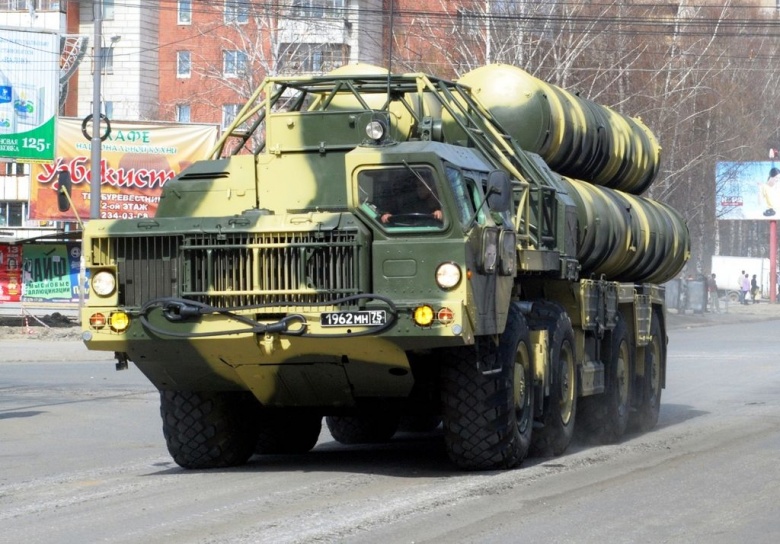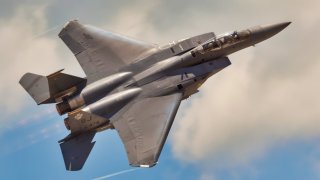S-300: The Air Defense System Built to Attack NATO Fighters and Bombers
The S-300 series, developed during the Cold War, includes variants like the S-300P, S-300V, and S-300F. Russia and Ukraine both employ the S-300 in the ongoing war, with Ukrainian forces targeting these systems to weaken Russian defenses.
Summary: The S-300, a sophisticated radar system used to track targets, was initially purchased by Iran from Russia in 2016.
-The S-300 series, developed during the Cold War, includes variants like the S-300P, S-300V, and S-300F.
-Russia and Ukraine both employ the S-300 in the ongoing war, with Ukrainian forces targeting these systems to weaken Russian defenses.
Understanding the S-300: The Cold War-Era Air Defense System in Modern Warfare
Last month, a Russian-designed S-300 air defense system was damaged in Iran following an Israeli-launched barrage.
Israel’s Defense Forces struck this sophisticated radar system made to track targets over the central Iranian city of Isfahan, which is home to a major Iranian military base and a nuclear facility. Moscow and Tehran have retained friendly relations for years and frequently exchange military equipment and other weaponry.
Iran first purchased S-300 systems from Russia back in 2016 as part of a trade deal worth around $800 million. The damage of one of these Russian-made systems used by Iran served as yet another blow to the regime.
Introducing the S-300
As the arms race between the Soviet Union and the United States was heating up during the Cold War, both nations heavily prioritized the development of advanced weaponry. Around this time, the Soviets were relying on its arsenal of S-25 Berkuts and S-75 Dvinas as their go-to mobile surface-to-air missile systems (SAMs).
In order to contend with the emerging threat of long-range air-based cruise missiles, however, the USSR needed a more sophisticated system. The S-300P was developed during the late 1960’s to fulfill this capability gap.

The Almaz Central Design Bureau was responsible for developing this new SAM, which was also intended to defend against air raids and the West’s new fourth-generation fighter jet platforms. Three main variations of the S-300 series exist, in addition to several more sub-variants.
The S-300P was the first variant completed in 1979, followed by the S-300V variant a few years later. The S-300 F was the next sub-variant in the family to be completed. Designated by the North Atlantic Treaty Organization (NATO) as SA-10A Grumble A, the S-300P is comprised of a range of capabilities and features, including a fire control system, surveillance radar and launch vehicles. The original S-300P system was semi-mobile and was designed to be capable of using a track-via-missile guidance system. Ultimately, however, technical issues prevented the TVM system from being able to track targets at shorter distances. To rectify this, a command-guidance system was added to the system.
Referred to as the SA-23a Gladiator and the SA-23b Giant by NATO members, the S-300V Antey-300 was uniquely constructed by Antey. This variant was designed to replace the Soviet’s 2K11 Krug and provide the Soviets a solid defense against cruise missiles, ballistic missiles and even aircraft. As detailed by the Center for Strategic and International Studies, “The S-300V uses 9M83 and 9M82 missiles to target ballistic warheads across a 40 km radius. The 9M83 is 7.5 m long, 0.5 m wide, and can target aircraft at 75 km. The 9M82 is 10 m long, 0.85 m wide, and can target aircraft at 100 km.17 The export missile variant, the Antei 2500, is similar to the 9M82, but extends the anti-aircraft range up to 200 km.”
The S-300F, designated by the Department of Defense as SA-N-6, was introduced in 1984. As the ship-based variant of the S-300 air-defense system, this unique model features the TOP SAIL and 3R31 Volna radar and can be installed on Kirov-class battlecruisers and Slava-class cruisers. The most recent member of the S-300 series is the Antey-2500. Developed in 2010, this variant has a reported range of 350km. Russian state-run media outlets have claimed that the Antey 2500 has “high tactical and technical characteristics that allow it to use it for air defence of the most important administrative, industrial and military facilities, troop groups, coastal infrastructure and naval forces at stationing site.”
The S-300 SAM system has notably been an active player in the ongoing Russian invasion of Ukraine. Like several military systems deployed in the war, the S-300 plays for both sides of the conflict. Moscow has used the S-300 system in ballistic missile mode to strike civilian and critical infrastructure targets in Kyiv since the onset of the war, making the destruction of these air-defense systems a top priority for Ukraine’s forces. Since February 2022, Kyiv has damaged at least a handful of Russian-employed S-300 systems, in addition to at least one more advanced S-400 Triumph air-defense system.
As the war wages on, Russia’s stockpile of S-300s- in addition to its newer SAMs, will undoubtedly continue to be targeted by Ukraine.
About the Author: Maya Carlin
Maya Carlin, National Security Writer with The National Interest, is an analyst with the Center for Security Policy and a former Anna Sobol Levy Fellow at IDC Herzliya in Israel. She has by-lines in many publications, including The National Interest, Jerusalem Post, and Times of Israel. You can follow her on Twitter: @MayaCarlin.
All images are Creative Commons.


